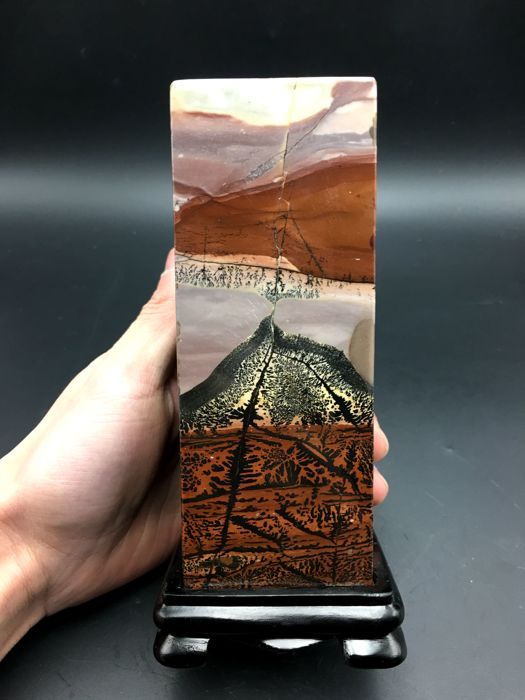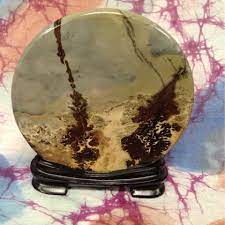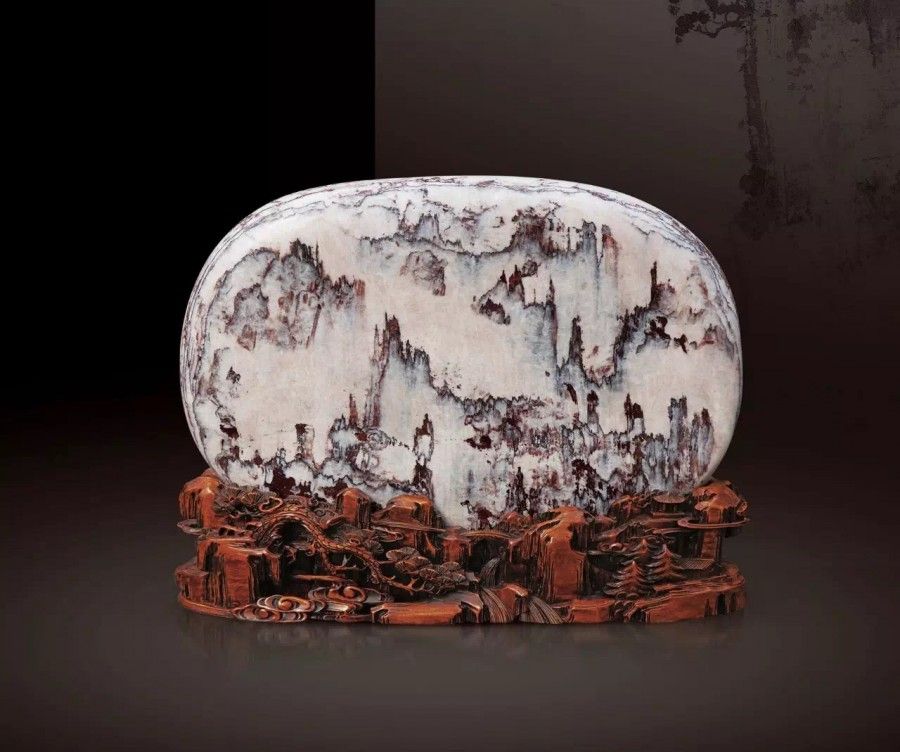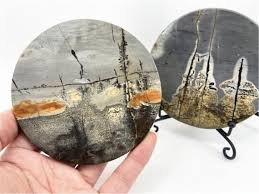Chinese Painting Stones
From the Mineral Minutes Archives, June 2014 and updated
by Sheryl E. Sims, MSDC Member

I just love Chinese painting stones! Being the type of person who does a lot of things a little bit, I discovered the beautiful stones a few years ago while attending one of my first mineral shows. While attending the EFMLS conference, I ran across the stones, an example of which is pictured above.
Every time I see Chinese painting stones, I’m reminded of landscape paintings. Perhaps I’m drawn to them because of my own joy of painting, with landscapes being among my favorite things to paint. I can’t get over how realistic each stone is and how uniquely beautiful nature handiwork is. They are just amazing!

After a bit of research, I discovered that some of these stones are from a very remote area of south west China, from a rock formation in the Solitary Mountains dating back 250 million years to the Permian Era.*

What I find most fascinating is that the beautiful pictures are the result of weathering with the colors dependent on the minerals in the area where they were formed. Water dissolves the minerals containing, for example, iron and manganese, which seep into the sedimentary rocks inside and along cracks and fissures. The colors are created from the various minerals mixing together. The hardness of these stones on Mohs hardness scale ranges from 4-6 (between fluorite and orthoclase).

The natural patterns are embedded permanently by heat and pressure. Because of the treelike features, these tree-like, or dendritic, mineral patterns are sometimes so amazing that they are often mistaken for fossil plants. Many village artisans cut, shape, and polish the stones to enhance their obvious beauty.
________________________________
*The Permian is the last period of the Paleozoic Era, following the Carboniferous Period and preceding the Triassic Period of the Mesozoic Era. The concept of the Permian was introduced in 1841 by geologist Sir Roderick Murchison, who named it after the ancient kingdom of Permia. The Permian witnessed the diversification of the early amniotes into the ancestral groups of the mammals, turtles, lepidosaurs and archosaurs. The Permian Period (along with the Paleozoic Era) ended with the largest mass extinction in earth's history. http://en.wikipedia.org/wiki/perrmian era.
